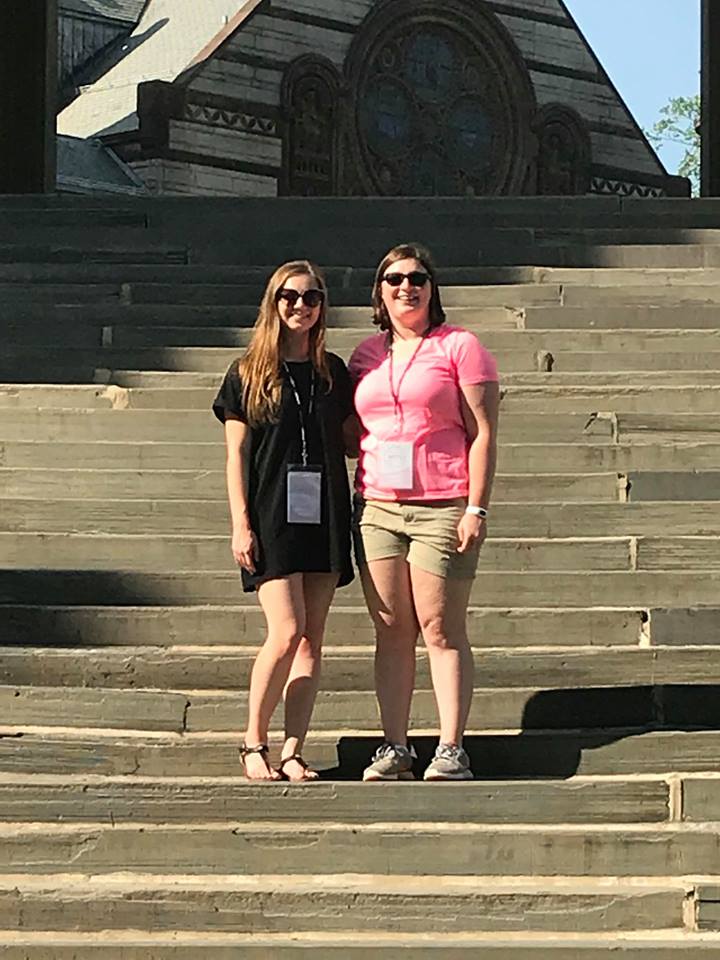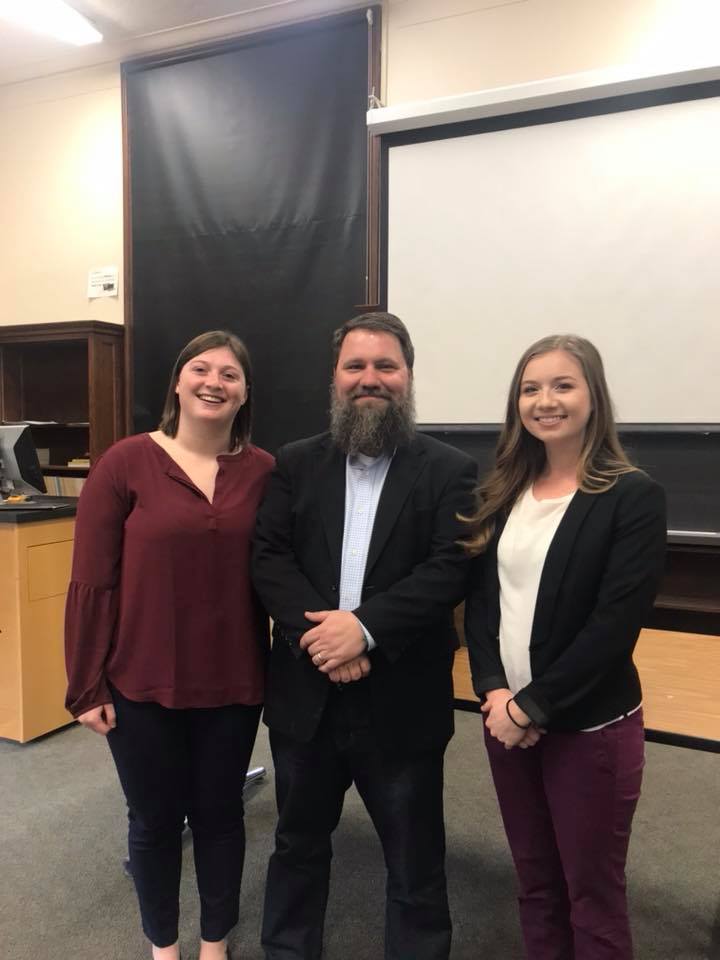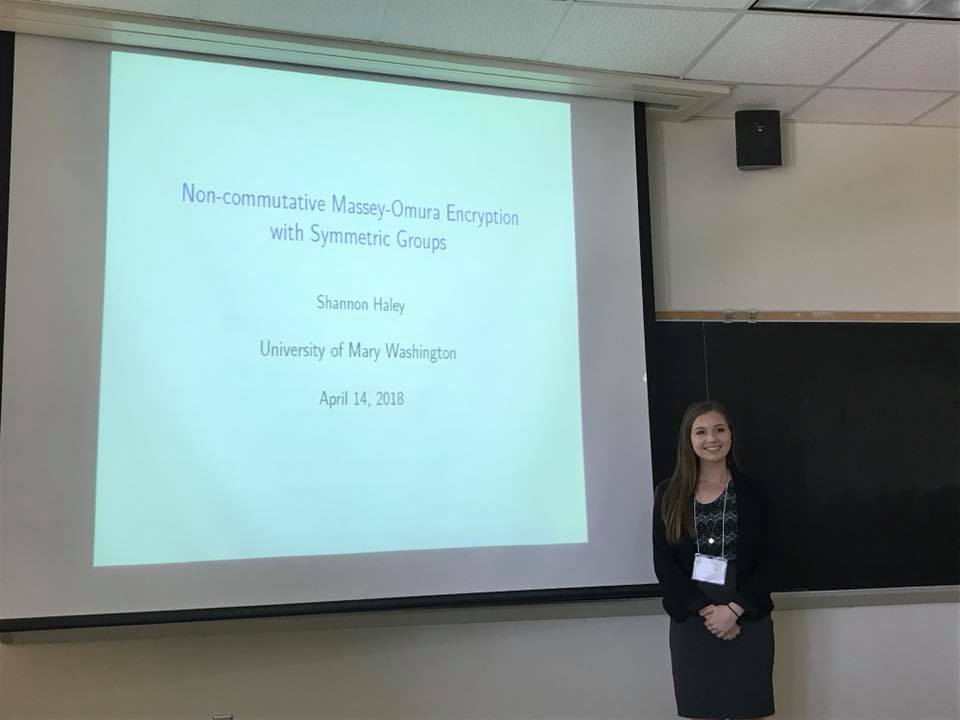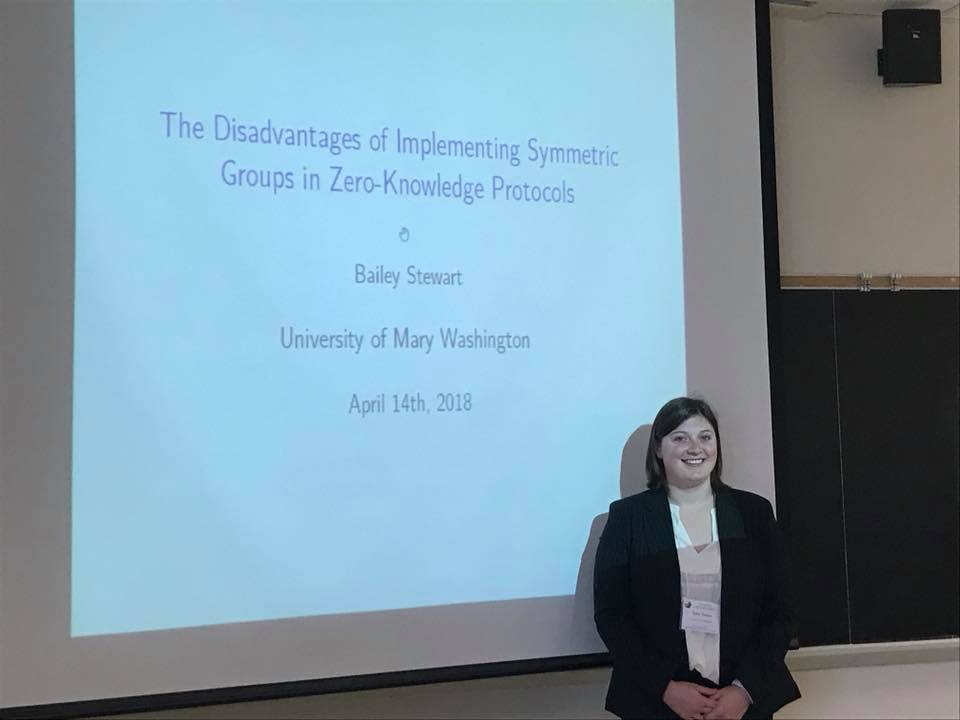Bailey Stewart ’18 grew up piecing together Lego blocks and K’nex sets, turning tiny pieces into space shuttles, castles and carnival rides. At home in Chesapeake, Virginia, where she and her sister would later discuss derivatives and integrals at the dinner table, she imagined becoming an engineer or architect.
She ultimately decided on a career in math, and Mary Washington, where she signed up for a unique class called cryptology – the art of writing and breaking codes. That led to an internship last summer solving real problems for the Department of Defense. This fall, the UMW grad will enter the agency full-time, joining a STEM field where women account for less than a quarter of the workforce.

Stewart says she’ll take with her the relationships she made at UMW – with professors, swim coaches and classmates, including one with whom she discovered the fascinating field of cryptology.
Really, the class just sounded interesting. Especially if you loved math, and the real-world application of it, the way Stewart and Shannon Haley ’18 did. Taught by mathematics professor and department chair Randall Helmstutler, the special topics course wasn’t taught every semester.
Cryptology is “why we have e-commerce. Your credit card number is run through an encryption process before it is passed over the internet and received by the vendor,” he explained. “The math is so difficult that the attacker cannot literally ‘do the math’ and uncover our secret. Yet, two authorized users share a common bit of secret information that allows them to … securely pass sensitive data back and forth.”

It is, at its root, how we use “very hard mathematics to conceal our secrets from eavesdropping hackers,” Helmstutler said.
In the fall of 2016, Stewart and Haley signed up. They enjoyed it so much – and were so good at it – the professor offered the pair an independent study the next semester.
Last summer, Stewart was one of 12 students out of hundreds of applicants around the country to be selected for the Cryptanalysis and Signals Analysis Summer Program.
“Shannon and Bailey are two of my favorite students over my 13 years here at UMW. Their enthusiasm for the material and their work ethic could not be ignored,” he said. “They exhibited ingenuity and tenacity in attacking problems. They would come to our meetings prepared with these intricate exploits on encryption systems, worked out from front to back in full detail. They would take over at the board, explaining their findings to me. When I got lost, they would show me the way. It’s the best thing you could ever experience as a teacher. I’ve never had so much fun at work.”
Stewart and Haley were having fun, too. They took one more independent study and spent their senior year writing honors theses in cryptology.
Stewart chose non-commutative zero knowledge protocols.
“It’s a way of convincing someone you are who you claim to be without ever revealing any information,” she explained. “If I’m in Virginia and you’re in California, and I want to convince you I live in a red house, you believe I live in a red house even though you haven’t seen it.”
Haley invented a new version of the Massey-Omura cryptosystem, named for the two mathematicians who created it. It’s an encryption system that works, she said, because of its commutative properties – the ability to move variables.
“If you take that away, it makes the algebra harder – and the code harder to attack,” said Haley, who is from La Plata, Maryland.
She presented her research in San Diego in January at the Joint Mathematics Meetings, the largest conference of professional mathematicians in the world.

If that wasn’t enough, Stewart and Haley recently returned from the Mathematics of Modern Cryptography Program for women at the Institute for Advanced Study in Princeton. The six-day conference included women still working on their undergraduate degrees and women who’ve spent years in the field of cryptology. They shared what it was like to be a woman in a field dominated by men.
While women filled nearly half of all U.S. jobs in 2015, they held less than a quarter of STEM jobs – jobs in science, technology, engineering and math, according to the Department of Commerce. And while nearly as many women have undergraduate degrees as men overall, they only account for 30 percent of STEM degree holders.

“That was never something that deterred me,” Stewart said.
And at UMW, things were different. Sixty percent of math grads are women, said Helmstutler.
“Professors are very supportive of students. They encourage you to work and get along with so many different kinds of people. The UMW community encourages that,” said Haley, who will be back in the fall for a master’s in education.
“I’m just a better problem-solver in everyday life and in everything I do,” she said. “That’s what math teaches you.”
Brava!!